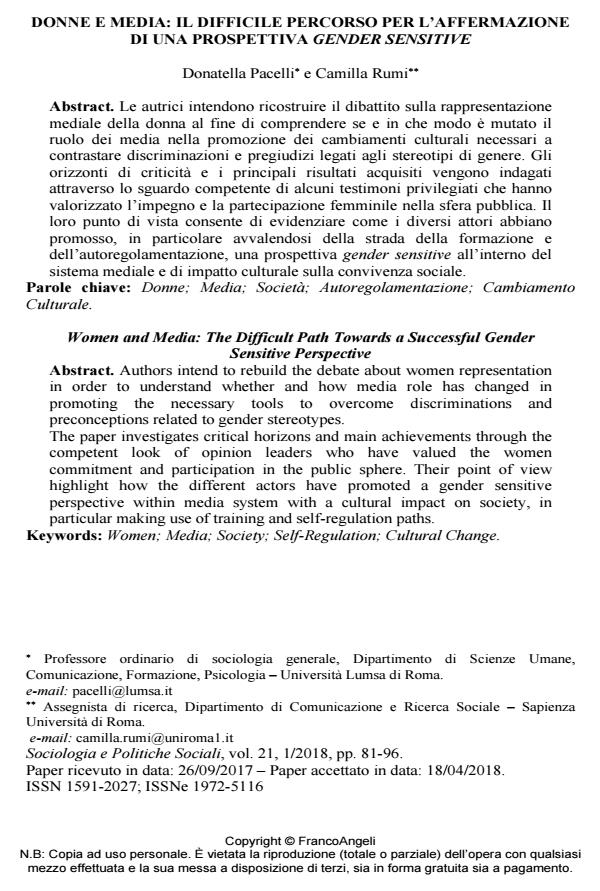Women and Media: The Difficult Path Towards a Successful Gender Sensitive Perspective
Journal title SOCIOLOGIA E POLITICHE SOCIALI
Author/s Donatella Pacelli, Camilla Rumi
Publishing Year 2018 Issue 2018/1
Language Italian Pages 16 P. 81-96 File size 231 KB
DOI 10.3280/SP2018-001006
DOI is like a bar code for intellectual property: to have more infomation
click here
Below, you can see the article first page
If you want to buy this article in PDF format, you can do it, following the instructions to buy download credits

FrancoAngeli is member of Publishers International Linking Association, Inc (PILA), a not-for-profit association which run the CrossRef service enabling links to and from online scholarly content.
Authors intend to rebuild the debate about women representation in order to understand whether and how media role has changed in promoting the necessary tools to overcome discriminations and preconceptions related to gender stereotypes. The paper investigates critical horizons and main achievements through the competent look of opinion leaders who have valued the women commitment and participation in the public sphere. Their point of view highlight how the different actors have promoted a gender sensitive perspective within media system with a cultural impact on society, in particular making use of training and self-regulation paths.
Keywords: Women; Media; Society; Self-Regulation; Cultural Change.
- La politica, le politiche. Le candidate donne nei talk show elettorali del 2022 Marco Cilento, Mihaela Gavrila, Camilla Rumi, in SOCIOLOGIA E RICERCA SOCIALE 131/2023 pp.148
DOI: 10.3280/SR2023-131010
Donatella Pacelli, Camilla Rumi, Donne e media: il difficile percorso per l’affermazione di una prospettiva gender sensitive in "SOCIOLOGIA E POLITICHE SOCIALI" 1/2018, pp 81-96, DOI: 10.3280/SP2018-001006